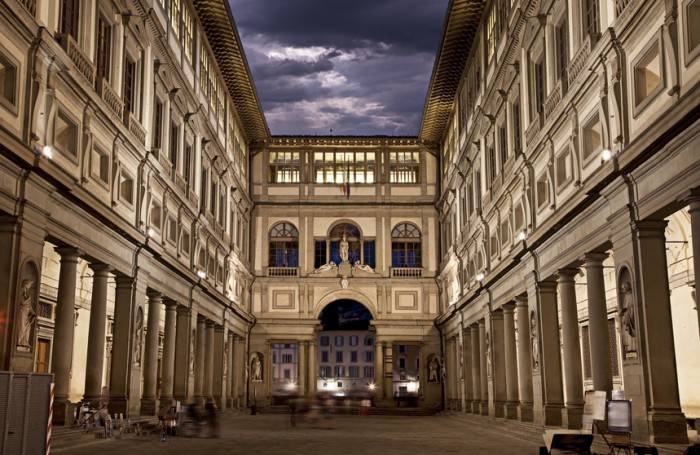Italy, Cradle of Culture, Curtails Spending on its Heritage
ROME -- Italy's cultural heritage outshines that of any other European nation, but this has not prevented the government from slashing its budget for heritage maintenance. As is, Italian families spend only 6.6% of their finances on culture, well below Sweden, with 11%, and Hungary and Spain. The current cuts, which total $6,263 million, eliminate subsidies formerly provided within the national budget. Autonomous museums will lose $26 million in subsidies; movie houses, which have ever fewer audiences, will lose $4.5 million, meaning that some will close. Publisher will lose $427,000 in subsidies. And chopping away $141,000 from book stores is also harsh because of their continuing losses and stores shutting due to the competition from on-line publishing.
Another $22.7 million that had been planned as a cultural incentive for youth has also been slashed. The goal of the bonus of Euro 500 ($570), which has been offered to every 18-year-old for the past couple of years, was to encourage young people toward "cultural consumption" by subsidizing their purchases of books and tickets to concerts, exhibitions, the theater, museums and such.
Up to now at least 550,000 young people had taken advantage of the program, which was "an investment in our youth," said Senator Andrea Marcucci of the Partito Democratico, president of the cultural commission of the Senate. For Dorina Bianchi, Undersecretary of the Culture Ministry, "A country like Italy really has to invest in its youth. It is in our interest: culture and tourism are an economic lever."
Minister for Culture and Tourism is Alberto Bonisoli, 56. Running as a Movimento 5 Stelle (M5S) candidate in the March elections, he won under 14%, but was nevertheless appointed to the present cabinet of the "Yellow-Green government," as it is called for the colors of the M5S and the Lega respectively. At Milan's prestigious business school the Bocconi, Bonisoli taught "innovation management," a course intended to show how to combine a product with the business process and organizational innovation, so as to enhance creativity in development. He serves as president of Coordinamento istituzioni AFAM non Statali, an association of non-governmental institutions which include private schools of art, fashion and design. And he is also the former director of the Nuova Accademia delle Belle Arti in Milan.
Bonisoli considers tourism "the Cinderella of the past governments" and, according to the Italian press, is hoping to entice more high quality tourism. "Culture and tourism in the future will be the chief providers of jobs, and for this reason one must foster the formation and valorization of a high preparation in, say, music," he is quoted as saying. He is also on the record as planning to invest at least 1% of the GDP, "if not more," in the cultural heritage, and to foster the "protection and digitalization of the heritage and in the culture scattered on our territory, and in particularly the peripheries" -- that is, the outskirts.
His experience, however, appears limited as regards heritage management, which becomes ever more difficult with the budget cuts that would be tough in any country, but are literally stunning in Italy, with its vast and complex history, from its Neolithic settlements to ancient Roman artifacts and roads and cities through the Middle Ages, the Renaissance, the Baroque, its 19th century historical sites, works of art and libraries, and, not least, its 20th century cinema heritage.
Decisions on the radical cuts are not yet definitive, however, and Paolo Ambrosini, who is president of the principal association of book dealers, says he plans to protest to the cultural commissions of both the Chamber of Deputies and the Senate. "I'm not speaking of just the culture subsidies," he said in an interview. "I am particularly concerned with the cuts in budgets for schools, research institutes and universities."
Indeed, Italy is among the European countries which now spends less than ever for education. According to the pan-European statistics agency Eurostat, the percentage of GDP Italy devoted to education was 3.9% in 2016, the most recent data available for comparative results. Of the 20 European Union countries in the classification, the median spent was 4.7% of GDP. Within the EU, Denmark and Sweden invest the most in its youth while Italy, standing third from the EU lowest and below Spain, was among those investing the least.






































i-Italy
Facebook
Google+
This work may not be reproduced, in whole or in part, without prior written permission.
Questo lavoro non può essere riprodotto, in tutto o in parte, senza permesso scritto.